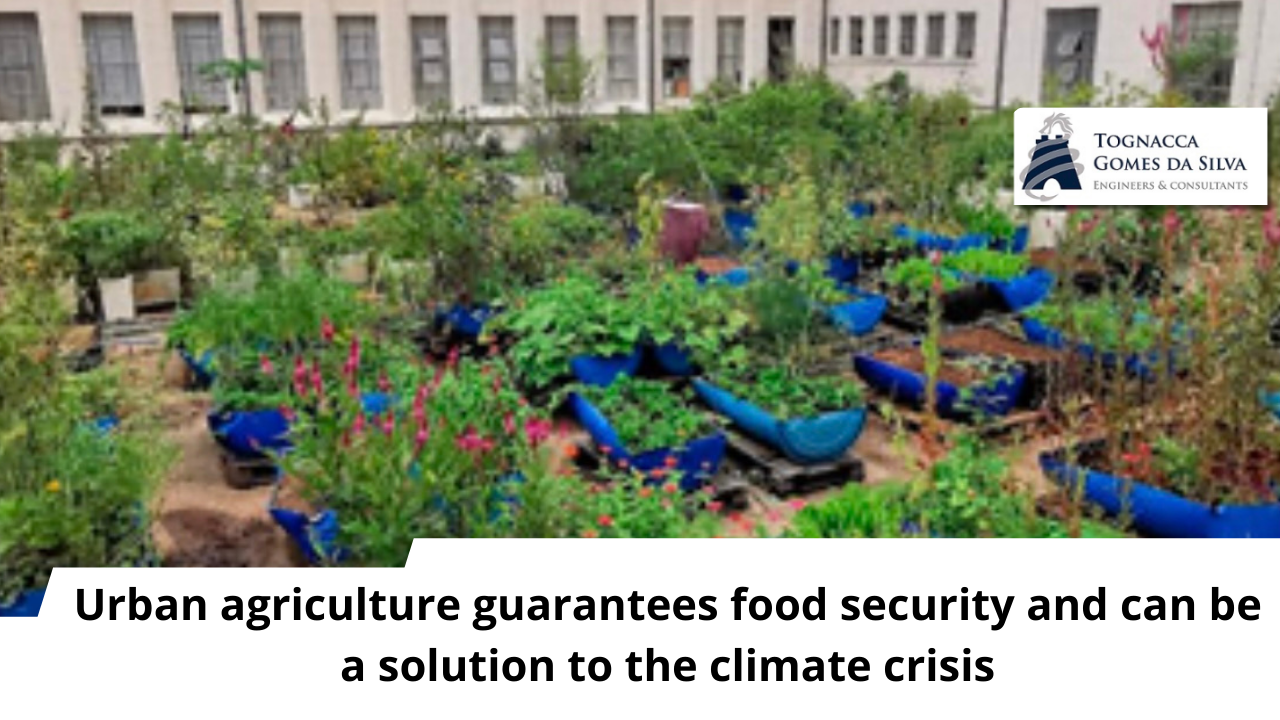Much more than just strengthening family production, urban agriculture can be a creative solution to the problems generated by climate change. According to the study “Building knowledge in urban agriculture: the challenges of local food production in São Paulo and Melbourne”, initiatives of this type appear more and more and there is still a lot of potential for growth.
One of the authors of the article, environmental engineer Luís Fernando Amato-Lourenço, PhD in science from the Faculty of Medicine of the University of São Paulo (FMUSP) and post-doctorate from the Institute of Advanced Studies of the University of São Paulo (IEA – USP) and from Freie Universität, from Berlin, Germany, believes that there is currently an even greater demand to strengthen food security, given the problems generated by the climate crisis.
In the study, urban agriculture developed in the city of São Paulo and the city of Melbourne, Australia, was compared. “In Melbourne, urban agriculture is linked to public health strategies, such as promoting physical exercise and other activities aimed at controlling overweight and combating obesity. In São Paulo, there are predominantly two modes: one of a socio-educational nature, based on voluntary work and agroecological principles, such as that developed in Parque das Corujas, in Vila Madalena; another aimed at generating income, mainly in peripheral areas of the South and East regions”, says Lourenço.
In Melbourne, urban agricultural activity is collective, in common spaces, or private, on private properties. Public policies regulate and define areas for the establishment of gardens and carry out soil testing and Australians who are beneficiaries of the gardens pay a monthly fee.
In São Paulo, Lourenço explains that these initiatives are normally based on voluntary work. That’s why they come and go easily. “Exceptions occur when there is a very committed person in leadership. This is the case of nutritionist, gastronomic consultant and influencer Neide Rigo, who maintains the blog ‘Come-se’ and runs a very successful vegetable garden in City Lapa. One of its contributions is the valorization of the so-called ‘Unconventional Food Plants’ (PANCs), which are highly resilient in the face of adverse weather conditions and constitute important nutritional options in times of climate change,” he says. The researcher, however, explains that creativity and innovative solutions in São Paulo attract attention. “Australian researchers were very interested in learning about the organic farming initiatives developed here,” he says.
The study clarifies that between 2017 and 2018, Paulo had 323 agricultural production units, with the majority of them being on properties smaller than 10 hectares and with temporary crops. “Among owners, family members and monthly payers, 802 people were directly involved in production”, says Lourenço.
According to the researcher, in the South region, where production is more significant, agriculture is typically family-based. “In this region, 64% of the population employed in the activity are owners and 78% live on properties. In total, 65% of the properties have exclusively family labor. And they produce a wide variety of items, including vegetables, roots, herbs and fruits”, he says.
Vertical vegetable gardens
Vertical gardens are also seen as good in large cities. For example, a vegetable garden cultivated on top of Shopping Eldorado, in São Paulo, provides pesticide-free vegetables and herbs to employees and their families.
“São Paulo has enormous potential for establishing vegetable gardens on the tops of buildings. In addition to enabling food production very close to end consumers and providing spaces for socialization and environmental education, these elevated green areas are also an alternative for mitigating heat islands. We need to implement lasting public policies that contribute to this”, he says.
For professor Thais Mauad, the practice of urban agriculture guarantees several advantages. “Faced with the climate change scenario, producing food in the city brings several benefits. The expansion of vegetation cover, soil permeability, increased air humidity, promotion of biodiversity, soil enrichment through organic matter and composting, combined with agroecological methods, are certainly elements that mitigate local climate change. Furthermore, producing food over short distances also brings advantages in terms of lower CO2 emissions from vehicular transport. And, in extreme situations of floods, fires and others, which can interrupt the flow of food to the city, urban gardens are alternatives to guarantee food security”, concludes Mauad.
( source: Katiuscia Mizokami/ digital agro)



